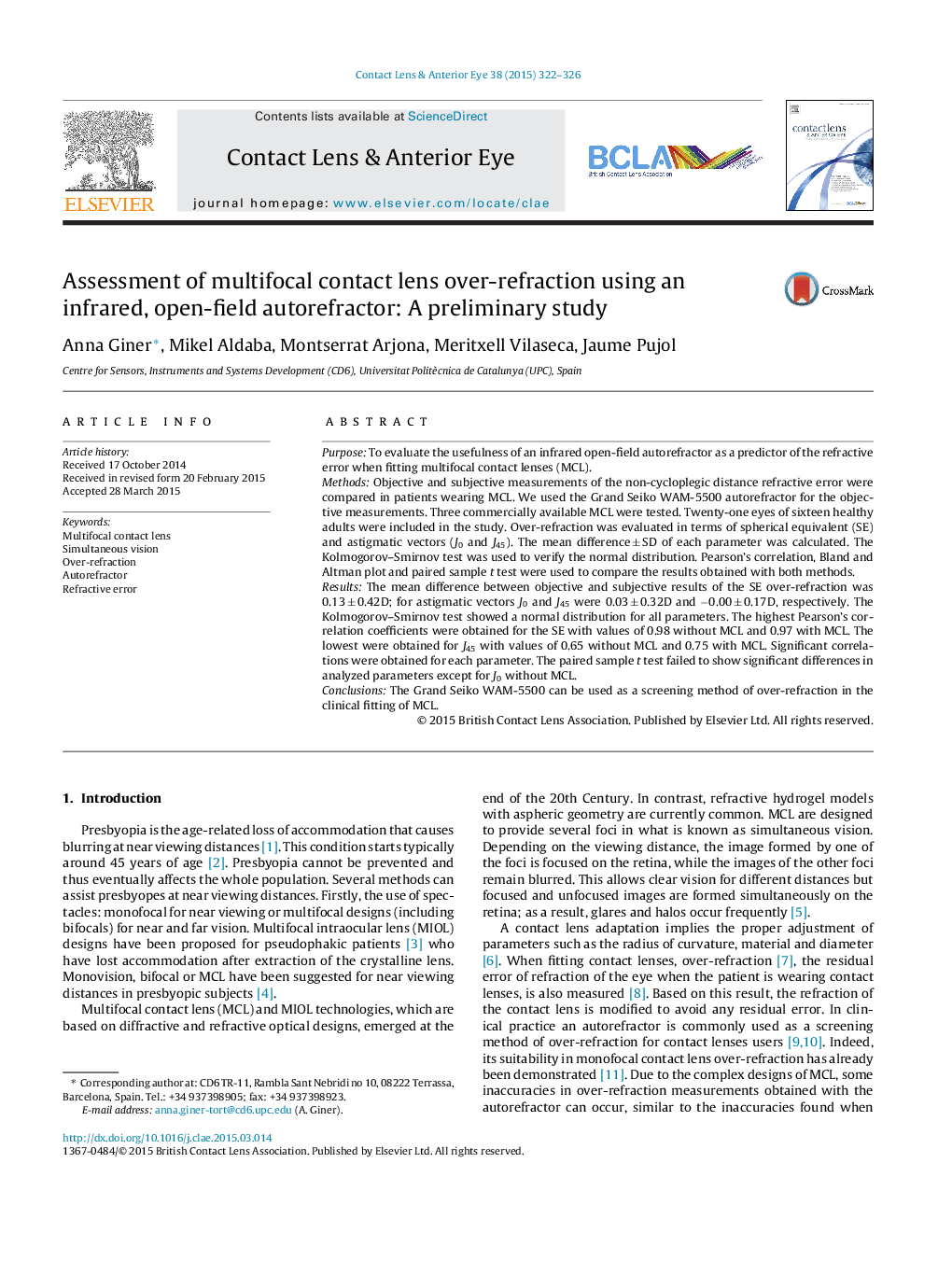| Article ID | Journal | Published Year | Pages | File Type |
|---|---|---|---|---|
| 2697282 | Contact Lens and Anterior Eye | 2015 | 5 Pages |
•Sub- and objective over-refraction with multifocal contact lenses was compared.•Grand Seiko WAM-5500 autorefractor was used to perform objective measurements.•Over-refraction was analyzed in terms of spherical equivalent and astigmatic vectors.•No statistical significance differences were found between both methods.•WAM-5500 was approved for over-refraction with multifocal contact lenses.
PurposeTo evaluate the usefulness of an infrared open-field autorefractor as a predictor of the refractive error when fitting multifocal contact lenses (MCL).MethodsObjective and subjective measurements of the non-cycloplegic distance refractive error were compared in patients wearing MCL. We used the Grand Seiko WAM-5500 autorefractor for the objective measurements. Three commercially available MCL were tested. Twenty-one eyes of sixteen healthy adults were included in the study. Over-refraction was evaluated in terms of spherical equivalent (SE) and astigmatic vectors (J0 and J45). The mean difference ± SD of each parameter was calculated. The Kolmogorov–Smirnov test was used to verify the normal distribution. Pearson's correlation, Bland and Altman plot and paired sample t test were used to compare the results obtained with both methods.ResultsThe mean difference between objective and subjective results of the SE over-refraction was 0.13 ± 0.42D; for astigmatic vectors J0 and J45 were 0.03 ± 0.32D and −0.00 ± 0.17D, respectively. The Kolmogorov–Smirnov test showed a normal distribution for all parameters. The highest Pearson's correlation coefficients were obtained for the SE with values of 0.98 without MCL and 0.97 with MCL. The lowest were obtained for J45 with values of 0.65 without MCL and 0.75 with MCL. Significant correlations were obtained for each parameter. The paired sample t test failed to show significant differences in analyzed parameters except for J0 without MCL.ConclusionsThe Grand Seiko WAM-5500 can be used as a screening method of over-refraction in the clinical fitting of MCL.
